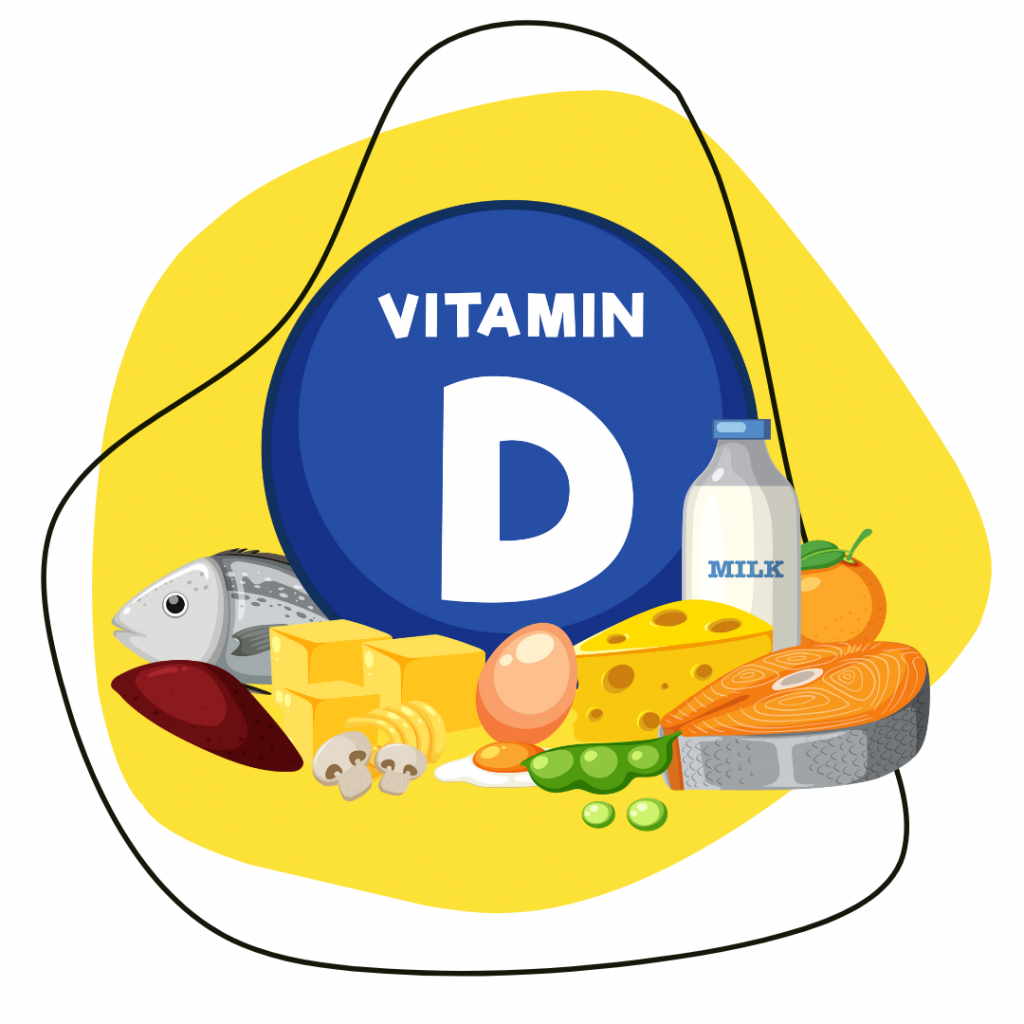
Why can’t you trust your daughter when it comes to your bone health? … Because vitamin D comes from the sun ☀️.
The body has the ability to produce vitamin D and vitamin K so why as Canadians do we have vitamin D in our diet or take supplements? In the late fall, winter, and early spring months, Canadians and those in the northern regions lack the adequate amount of ultraviolet (UV) exposure to produce enough vitamin D. For those who live close to the equator, vitamin D levels are not a big deal because the sun’s frequency is more intense all year round. The frequency of the sun’s rays gives a higher or lower UV index value. This index gives us an estimate of how long it will take to burn when exposed to sunlight.
On the sunshine index, a value of 3 or more allows the keratinocyte in the skin to produce and metabolize vitamin D. Due to the Canadian climate and geography, a UV index of 3 or more is only available through the late spring to early fall and generally is highest between the hours of 10am to 2pm (1). For this reason, it is important to get vitamin D in the diet and as a supplement. Vitamin D is most known for being found in fish oils but is also high in liver, fortified dairy, and egg yolks. For the majority of people, a typical diet will not give them enough vitamin D to meet their recommended daily intake therefore supplementing is essential in the dark months of the year. Adults should have between 1000 and 4000 IU (international units) of vitamin D every day (1). Children are between 600 and 1000 IUs (1). Vitamin D can become toxic in the body because it is not excreted through the urine but extremely potent doses are needed such as 10-30’000 IUs daily (1).
What does vitamin D do anyway you may ask? It has a direct relationship with calcium and phosphorus absorption for good bone health (2). It also keeps muscles functioning well which reduces the risk of falls, and thus, fractures. For children, a lack of vitamin D can cause rickets which is a bone softening disease (2). Soft bones can lead to deformation as the bones can bend while the child is still growing. This is most notable in the femurs (thigh bone) and can cause knocking knees or a waddle gait. Adult’s bones are fully developed but a lack of vitamin D and calcium absorption can also lead to bone softening. This is called osteomalacia. Over time, someone with soft bones will reduce the inner bone strength and density and their osteomalacia can progress to osteoporosis (1,2). Those with osteoporosis have more brittle bones and have much higher risk of fracture for trauma or falls.
Stay fortified, stay sunny,
Dr. Cole Maranger
If you want more details check out:
- Vitamin D Fact Sheet. Multiple Sclerosis Society of Canada. PDF. Retrieved from: https://mssociety.ca/library/document/38cuveX9sSrF0QEZ1DfOMUaBilKTyRJk/original.pdf
- Leanne et al. Vitamin D–deficiency rickets among children in Canada. Canadian Medical Association Journal. PDF. Retrieved from: https://www.cmaj.ca/content/cmaj/177/2/161.full.pdf
- Vitamin D. Harvard T.H. Chan. The nutrition source. Web. Retrieved from: https://www.hsph.harvard.edu/nutritionsource/vitamin-d/
